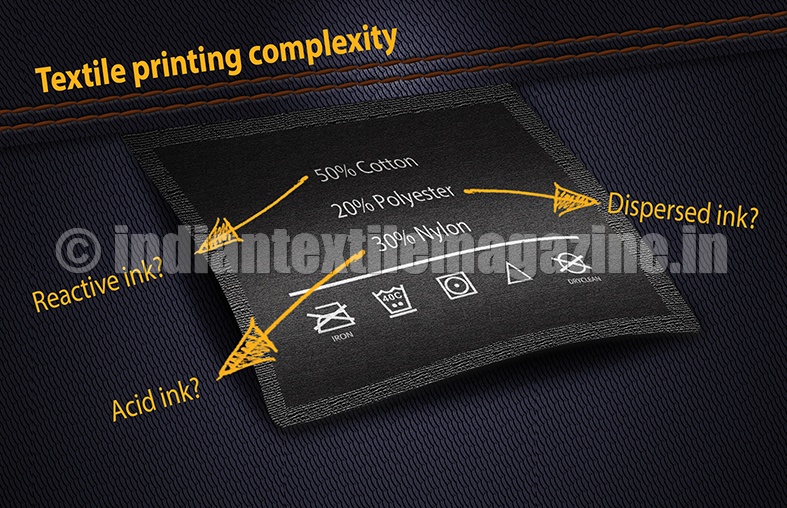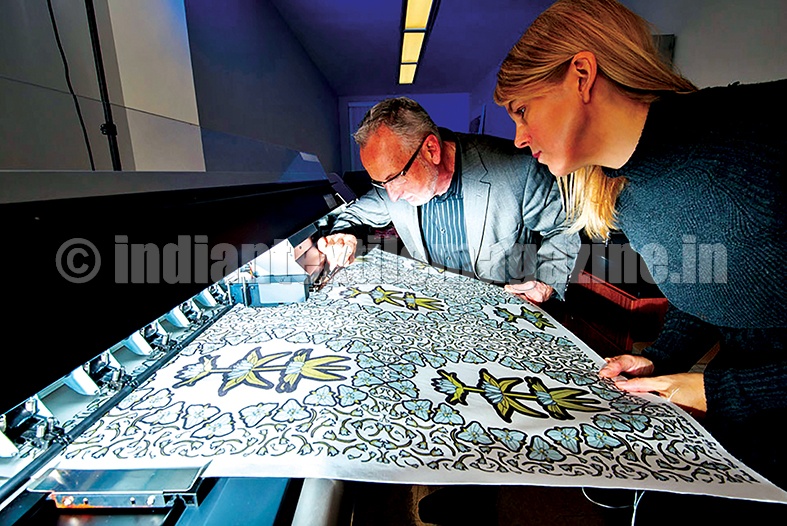Textile is one of the world’s largest industries, and it has come a long way. The textile printing industry represents 30 billion yards of material volume on an annual basis worldwide.
Digital inkjet printing has already made an impact on the world of signs and promotional graphics turning it into an on-demand, fast-turnaround industry.
Industry data shows that after a decade of advances in digital printing technologies for textile, only two per cent of the world’s printed textiles are produced digitally. This raises an important question: What is the reason digital textile production is still a niche market? And what are the trends that influence the textile market and its technologies.
When examining the textile market, especially the fashion design sector, we witness a change in this market needs. There is growing demand for greater variety of colors and design at quicker turnaround cycles. Textile designers are rethinking their approach to production and manufacturing of textiles. Whether designing for sportswear or a fashion line or even for furniture upholstery, all these markets are changing the way they present their style. Styles and trends are constantly changing in today’s fast pace world. Thus, short cycles of fashion lines demand fast turnaround in production and manufacturing of textiles.
Responding to this trend of “fast fashion” and switching from mass production to mass customization, digital textile production is becoming the cost-effective choice for brands in both the apparel and home markets.
Textile print shops are then forced to find new and innovative ways to provide printed fabrics while minimizing the cost and waste.
Digital printing is a relatively new technology in the textile market, but it offers multiple benefits to the traditional textile printing process. It has dual application in printing, acting both as a sampling and production tool. In sampling, digital printing offers immediate results, provides tremendous flexibility in design and coloration while saving time and money. As a production tool it helps in minimizing inventory waste as there is no discharge of dyes & chemicals, reducing downtimes, and cutting costs and providing the option of mass customization.
Digital printing on textiles is done today mainly on polyester fabrics using dye sublimation. However, there are more applications which can benefit from short run digital printing, enabling printing on natural fabrics as well as on blended fabrics. Fabrics, ink colors and ease of creation without the limitation of minimum yardage requirements enrich printed fabrics to be a unique piece of custom art.
So what’s holding fabric printers from responding to this growing demand? Why aren’t they producing textile printing on ALL fabric types under the same printing line?
In today’s digital textile industry the limitation is twofold: first, the fact that different types of inks are required for different types of fabrics. Each fabric type is being printed with specific ink technology which requires dedicated printing machinery per application.
Reactive type ink is the most commonly used ink for the textile industry today as it is used for home textile and fashion fabrics. It is mainly used for cotton fabrics. Acid inks are used for sportswear made from Nylon and Lycra fabric type and disperse ink type is used for polyester fabrics for the home décor and flag printing.
In addition, different pre- and post-treatment equipment are required for different types of inks. Acid and reactive inks require a wet post-treatment and the printed fabrics need to undergo several steaming, washing and drying steps. On the other hand, pigmented and disperse inks require a dry-post treatment as they need a heat fixation process before using the fabrics.
This factor limits the flexibility of a single print house to provide numerous types of services. Moreover, print shops tend to focus only on one single process line as each type requires a different technical experience, and usually they specialize in one type of fabric printing. Secondly, traditional digital textile printing requires pre- and post-treatment to the fabrics to maintain rub resistance and long-term wash durability. These limitations affect the cost effectiveness of short-run textile printing as provision of different types of inks and printers and different types of pre and post-treatment are time consuming and expensive.
Digital textile technology offers today a complex printing process. There are specific inks, treatments and machinery needed for different types of fabrics. With current types of inks, different types of fabrics such as cotton, nylon, polyester and viscos cannot all be printed using the same printing process.
There are many digital printing technology issues that will determine the future of the textile printing market. These involve print speed, resolution/drop size and configuration, ink performance, substrate handling, color control and color matching, wash and wear fastness and fixing and curing. The biggest player that will no doubt be the main influencer in this emerging market is the ink and it could hold the solution for simplifying the complexity of digital textile printing.
Today, the choice of the fabric type dictates the choice of ink. There are different types of inks used for different types of fabrics and applications. Furthermore, each fabric type requires a different pre and post treatment equipment.
Digital textile printing business offers a lot of advantages. Cost-reduction, eco-friendly solutions and short-run production with mass customization are among the main features.
Is the technology at a tipping point where a simply modification is needed in order to meet the textile market demand?
The next phase in digital textile printing will depend on formulating a new concept in the printing process to allow print shops to be synchronized with the market trends and offer printing solutions on all available fabrics under one simple production line.

